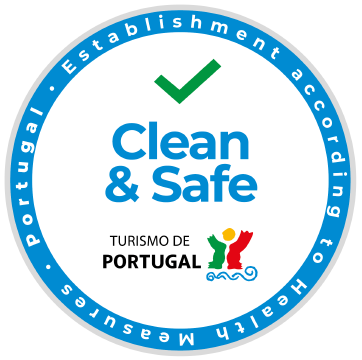Description
We have selected the following publications:
•Fruit ripeness identification using YOLOv8 model
🔴Authors: Bingjie Xiao, Minh Nguyen, Wei Qi Yan
☑️Institution: Auckland University of Technology, Auckland 1010, New Zealand
•Fresh and Rotten Fruits Classification Using CNN and Transfer Learning
🔴Authors: Sai Sudha Sonali Palakodati, Venkata RamiReddy Chirra, Yakobu Dasari, Suneetha Bulla
☑️Institution: Department of Computer Science & Engineering, Vignan's Foundation for Science Technology and Research, Guntur 522213, India
•Fruit Classification based on ResNet and Attention Mechanism
🔴Authors: Miaorun Lin
☑️Institution: Department of Telecommunication Engineering and Management, Beijing University of Posts and Telecommunications, China
𝑨𝒖𝒕𝒐𝒓: Sai Sudha Sonali Palakodati, Venkata Rami Reddy Chirra, Yakobu Dasari, Suneetha Bulla
𝕴𝖓𝖘𝖙𝖎𝖙𝖚𝖈𝖎𝖏𝖆: Department of Computer Science & Engineering, Vignan's Foundation for Science Technology and Research, Guntur 522213, India
Research goal:
Rotten fruit detection is becoming important in the agricultural industry. Usually, the classification of fresh and rotten fruit is performed by humans which is inefficient. Humans will get tired doing the same task over and over again, but machines won't. Thus, the project proposes an approach to reduce human labor, reduce costs and time for production by identifying rotten fruit. If the defective fruit is not detected, it can spoil the correct fruit.
The paper presents a model for detecting rotten fruit using fruit images as input. A dataset downloaded from Kaggle was used for training and contains 3 types of fruits: bananas, apples and oranges with 6 classes. Each fruit had its own class: fresh and rotten. The total size of the dataset is 5989 images. Of these, 3596 images for training, 598 images for validation and 1797 images for testing. The model was developed using convolutional neural networks and transfer learning. Convolutional neural networks were used to train the model on the training data set, while the transfer learning technique was used to fine-tune the trained model.
We have selected the following publications:
•Fruit ripeness identification using YOLOv8 model
🔴Authors: Bingjie Xiao, Minh Nguyen, Wei Qi Yan
☑️Institution: Auckland University of Technology, Auckland 1010, New Zealand
•Fresh and Rotten Fruits Classification Using CNN and Transfer Learning
🔴Authors: Sai Sudha Sonali Palakodati, Venkata RamiReddy Chirra, Yakobu Dasari, Suneetha Bulla
☑️Institution: Department of Computer Science & Engineering, Vignan's Foundation for Science Technology and Research, Guntur 522213, India
•Fruit Classification based on ResNet and Attention Mechanism
🔴Authors: Miaorun Lin
☑️Institution: Department of Telecommunication Engineering and Management, Beijing University of Posts and Telecommunications, China
𝑨𝒖𝒕𝒐𝒓: Sai Sudha Sonali Palakodati, Venkata Rami Reddy Chirra, Yakobu Dasari, Suneetha Bulla
𝕴𝖓𝖘𝖙𝖎𝖙𝖚𝖈𝖎𝖏𝖆: Department of Computer Science & Engineering, Vignan's Foundation for Science Technology and Research, Guntur 522213, India
Research goal:
Rotten fruit detection is becoming important in the agricultural industry. Usually, the classification of fresh and rotten fruit is performed by humans which is inefficient. Humans will get tired doing the same task over and over again, but machines won't. Thus, the project proposes an approach to reduce human labor, reduce costs and time for production by identifying rotten fruit. If the defective fruit is not detected, it can spoil the correct fruit.
The paper presents a model for detecting rotten fruit using fruit images as input. A dataset downloaded from Kaggle was used for training and contains 3 types of fruits: bananas, apples and oranges with 6 classes. Each fruit had its own class: fresh and rotten. The total size of the dataset is 5989 images. Of these, 3596 images for training, 598 images for validation and 1797 images for testing. The model was developed using convolutional neural networks and transfer learning. Convolutional neural networks were used to train the model on the training data set, while the transfer learning technique was used to fine-tune the trained model.
Sensation Details
For lovers of:
Tours.
Risk level:
Very low
Duration:
02:00 Hours
GPS Location:
Meeting point:
Lisbon, Portugal
Translator:
Human
Translation for:
English
Useful Information
Customers:
Minimum: 1 Maximum: 15
Children:
Allowed (Up to the age of 12)
Reservation:
Automatic
Prices (Per Person)
Adults:
25.00 €
Children:
10.00 €
Payment To Provider
Pays accepted:
Cash ; Wire Transfer ; Credit Card ; Debit Card ;
Vouchers accept:
['Paper', 'Electronic']
How To Enjoy Your Sensation
Opening time:
08:00h
Type of service:
One use ticket
Closing time:
23:00h
Help for the tour:
You can contact the Sensation provider by email or phone later to agree the start time of the event. The necessary contact information will be provided in the voucher. Make sure to follow the provider recommendations.
Sensation Details
For lovers of:
Tours.
Risk level:
Very low
Duration:
02:00 Hours
GPS Location:
Meeting point:
Lisbon, Portugal
Translator:
Human
Translation for:
English
Useful Information
Customers:
Minimum: 1 Maximum: 15
Children:
Allowed (Up to the age of 12)
Babies:
Not Allowed (Up to the age of 3)
Reservation:
Automatic
Prices (Per Person)
Adults:
25.00 €
Children:
10.00 €
Payment To Provider
Pays accepted:
Cash ; Wire Transfer ; Credit Card ; Debit Card ;
Vouchers accept:
['Paper', 'Electronic']
How To Enjoy Your Sensation
Opening time:
08:00h
Type of service:
One use ticket
Closing time:
23:00h
Help for the tour:
You can contact the Sensation provider by email or phone later to agree the start time of the event. The necessary contact information will be provided in the voucher. Make sure to follow the provider recommendations.





Copy the link
Recommend by email
Recommend by email to Customers
Recommend by SMS to a Customer
Recommend Premium Sensations Link